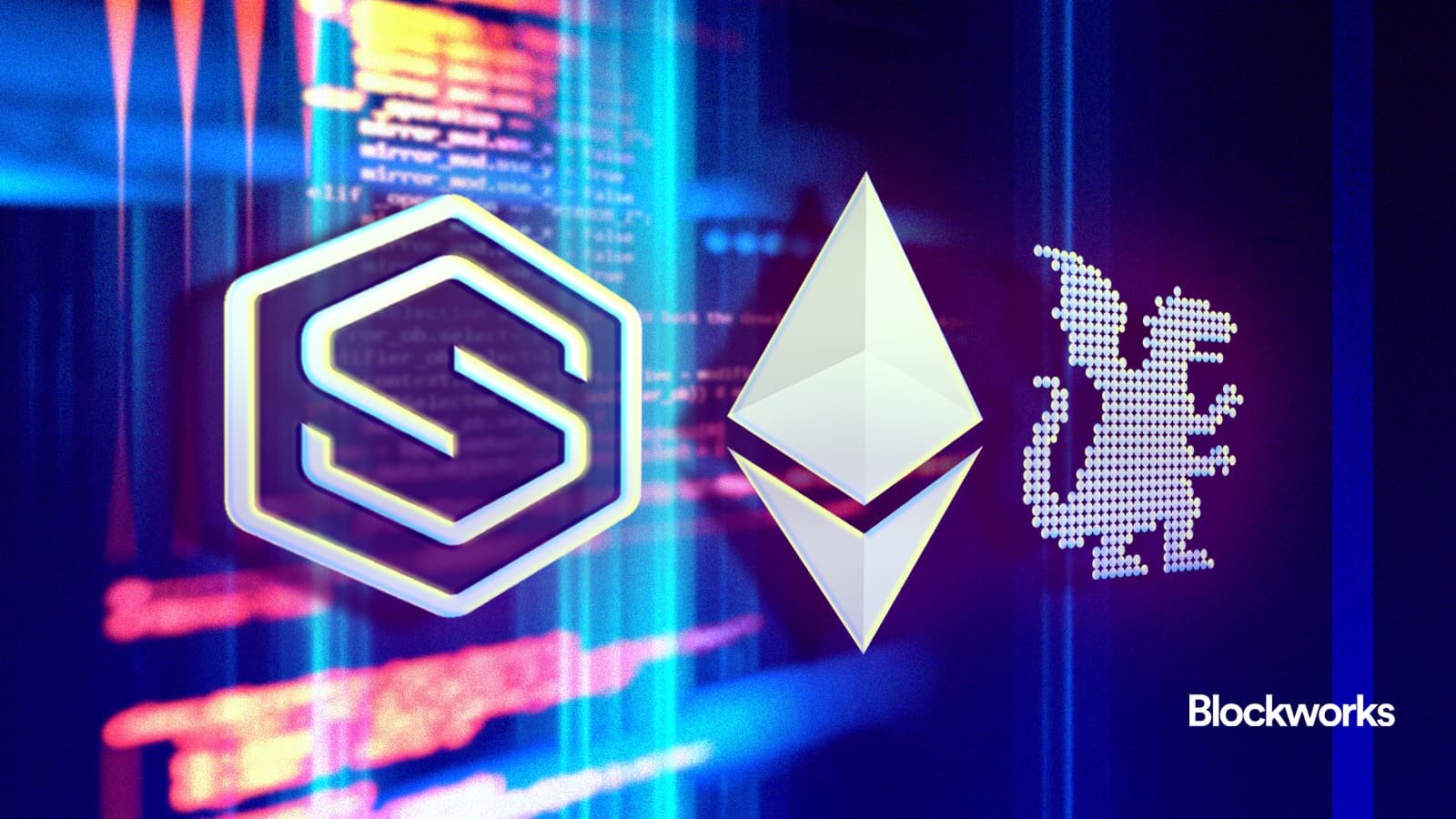Sharplink takes its ETH onchain, as ETHZilla trims its stash
The $200M Sharplink plan combines staking, Eigencloud AVS rewards and partner incentives under qualified custody

whiteMocca/Shutterstock and Adobe modified by Blockworks
SharpLink Gaming plans to deploy $200 million worth of ether onto Linea, ConsenSys’ zkEVM Layer 2, in a multi-year program that pairs ether.fi staking with EigenCloud restaking rewards and ecosystem incentives.
The public company frames the move as a way to turn an already large ETH treasury into productive, onchain capital while keeping institutional controls under Anchorage Digital custody.
Both Linea and Ether.fi are offering meaningful incentives, according to Ether.fi CEO Mike Silagadze.
“SharpLink’s $200 million is just a starting point — the intention is to scale that up,” Silagadze told Blockworks.
Mechanically, staking occurs on Ethereum mainnet, with a receipt token bridged to Linea for DeFi activities, Silagadze explained.
“Restaking happens in the background — it doesn’t matter where the token sits,” he said, noting that Ether.fi has been available on Linea for over a year.
Anchorage is integrating with ether.fi so qualified-custody clients like Sharplink can mint and allocate directly from custody, according to a person familiar with the plans.
A SharpLink spokesperson declined to offer details on the net yields, other than to say the plan is “designed to generate risk-adjusted yields well above the native ETH staking rate.”
Regarding related-party considerations tied to ConsenSys founder and SharpLink chairman Joseph Lubin, the spokesperson said, “SharpLink manages all corporate governance matters with the rigor and transparency expected of a Nasdaq-listed company.”
The deployment is similar to Ether.fi’s previous partnership with ETHZilla, which saw $100 million in ether deployed into its staking infrastructure.
ETHZilla sheds some ETH
The Sharplink announcement comes the same day as social media is atwitter over a different treasury move: ETHZilla said it sold roughly $40 million of ETH to repurchase shares trading below measured NAV after an investor’s open letter urged buybacks.
Silagadze called that decision “about signaling,” aimed to close a steep discount rather than a retreat from DeFi and said ether.fi has seen “no withdrawals” tied to the buyback.
Read against the broader digital-asset-treasury (DAT) landscape, SharpLink’s program underscores two diverging playbooks this cycle: sell ETH to close a market discount, or keep ETH productive onchain to compound staking, restaking and partner incentives. SharpLink is explicitly choosing the latter — and doing so on a specific L2 with a growing institutional pitch.
The ETH DAT King Kong — BitMine Immersion (BTMR) — meanwhile, has yet to take steps into onchain yield.
Risk management sits at the heart of whether more public treasuries follow. On the protocol side, the hazards span L2 bridge and sequencer assumptions, smart-contract vulnerabilities, and the slashing conditions of the specific EigenCloud AVSs SharpLink elects to back.
Like the ETHZilla deal before it, Silagadze said, AVS selection and risk curation sit within Ether.fi’s remit.
The Sharplink spokesperson confirmed “a collaborative partnership with Etherfi” and added, “we pre-review AVS terms and define clear de-risk triggers.”
A separate source of confusion for equity markets is how to read “mNAV” — the ratio investors use to judge whether a DAT trades above or below its underlying portfolio value.
There are four ways to track mNAV, said Blockworks Research’s Dan Smith, “and the ‘best’ depends on the company.” For instance, prefunded warrants can make outstanding mNAV diverge from fully diluted, while cash-heavy balance sheets argue for enterprise value-based measures.
Smith pointed to ETHZilla selling ETH when outstanding mNAV was below 1 but fully diluted was above 1 — suggesting it manages to the outstanding figure. By contrast, BitMine has sold stock even while its outstanding mNAV was less than 1, implying it makes its determination based on the fully diluted metric, Smith said.
 Source: Blockworks Research
Source: Blockworks Research
For now, SharpLink’s move jives with an approach of putting ether to productive use, staking and restaking at institutional scale, with token incentives sweetening initial economics.
Whether that approach becomes the default for public ETH treasuries will hinge on what matters most to boards and investors: closing today’s market discount, or compounding tomorrow’s onchain yield to maximize ether.
Updated 10/28/25 at 3:30 pm ET to reflect comments from SharpLink.
Get the news in your inbox. Explore Blockworks newsletters:
- The Breakdown: Decoding crypto and the markets. Daily.
- 0xResearch: Alpha in your inbox. Think like an analyst.






